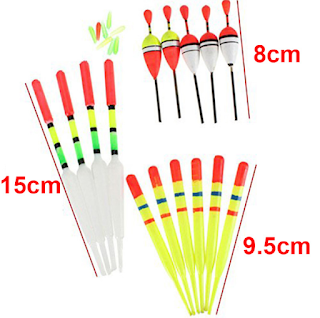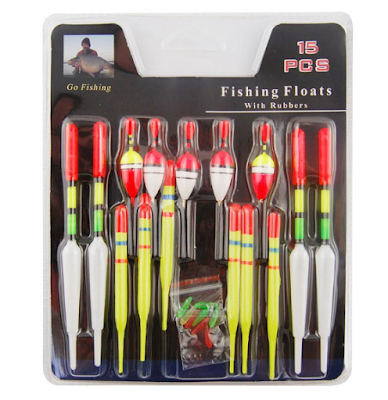As we all know, fishing float (also called
a bobber in the United States) is a fundamental accessory of fishing. Selecting
the right float for the conditions will make the difference between a great day
on the water or catching nothing at all. But select the right float is not an
easy work, you have to pay attention to many details.
1. The size
of fishing float
“Diameter” is a word which people use
frequently when they talk about the size of fishing float. If you want to
select a suitable fishing float, diameter is a very important factor.
It is a common sense that the size of fishing floats should
be determined by waves, wind strength, the depth of the water, shyness of fish,
current, its size and type of bait use and required casting distance. Different
diameters of floats are designed for different areas. If you select a wrong
size, you may catch nothing in the end.
Experienced fishermen suggested that larger
diameter floats have a tendency to be more stable in the current.
2. The types
of fishing float
People have divided the fishing floats into
many types by their different shapes. And floats with different shapes are
suitable for different conditions. For example, longer floats are better for
fishing at deeper waters and shorter floats are better for shallower waters. Here
are some common types of fishing floats.
a. Waggler floats
Waggler float is the term given to any
float which is attached only at the bottom to the line. It is the most common
fishing float nowadays. The waggler floats are very sensitive, and they are
mainly use in 3 conditions:
• Still water or slow to medium paced rivers
• Turbulent water during windy conditions
• Choppy lake waters with medium to large size waves
• Still water or slow to medium paced rivers
• Turbulent water during windy conditions
• Choppy lake waters with medium to large size waves
b. Stick
floats
Stick Float is a straight float with a
taper. It is always attached to the line both top and bottom. The advantage of
using this float is that it can be immersed in the flow of the water against a
tight line without the float submerging as the tide pulls on the trace. And
people generally use it for river fishing.
c. Pole
floats
Pole floats are made from wire, nylon,
balsa or cane, and they are very small and do not require much weight to
control stability. Pole floats come in a lot of different
shapes and it’s important to know which one to choose. Here are the suitable fishing conditions for pole floats:
• River fishing (float with the widest part
of the body at the top)
• Fishing in windy conditions on still
waters (float with the widest part of the body at the bottom)
• Fishing deep and shallow lakes and canals
• When fish are shy (float with slim body as
they will indicate the most delicate bites)



没有评论:
发表评论